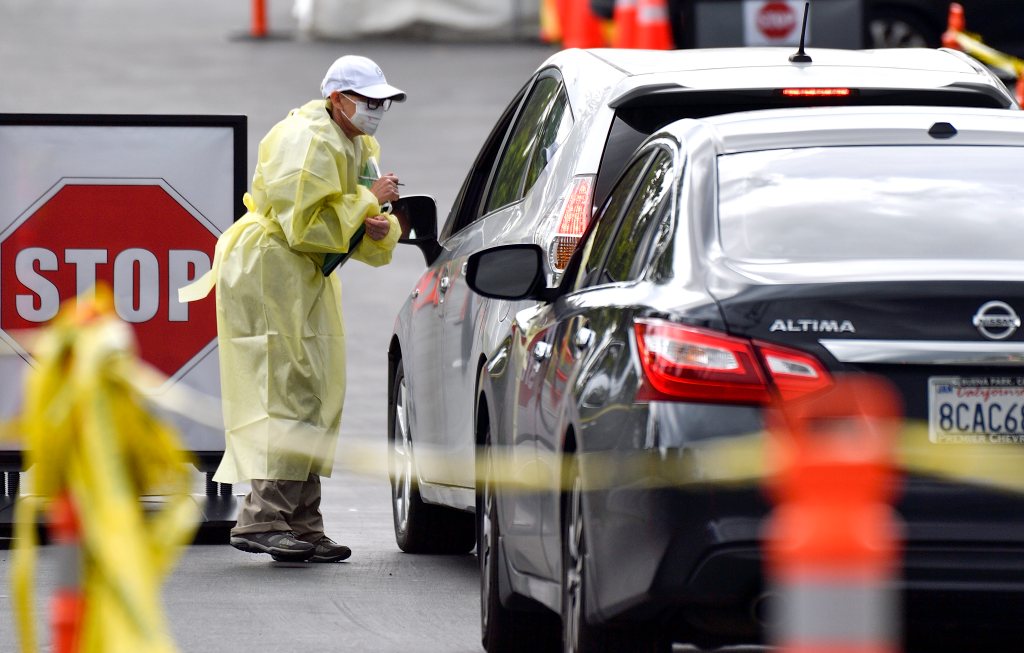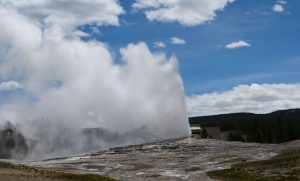Even as they frantically stock up on protective gear and jump through the hoops of converting regular rooms to intensive care beds, Bay Area hospitals say they are not yet seeing the surge in coronavirus patients that state officials have warned is on the way.
So when will it come?
Santa Clara County, the most stricken in the Bay Area, reported that 125 coronavirus patients were in the hospital as of Monday evening, up from 62 the previous week.
But the timing of the widespread surge is impossible to know exactly. Gov. Newsom this week called for California hospitals to add a staggering 50,000 beds to address a coming wave of patients, and officials are scrambling to add temporary facilities across the state, repurposing convention centers, deploying a hospital ship and taking over soon-to-be shuttered facilities.
“I am sad to have to say the worst is yet to come,” San Francisco Public Health Chief Grant Colfax said this week. “Every community where the virus has taken hold has seen a surge in coronavirus patients who need to be hospitalized. We expect that to happen in San Francisco in a week or two or perhaps less.”
But a variety of hospital administrators and union officials who represent nurses and other healthcare workers told the Bay Area News Group in interviews it’s not here yet.
Unlike reports on influenza, the numbers are hard to come by, as only Santa Clara County is positing updates on coronavirus hospitalizations, with other counties not returning requests for coronavirus patient data and individual hospitals refusing to reveal their figures. In the backdrop of a growing pandemic, the numbers are vital for experts to gauge just how severe the toll of the outbreak will be, and whether dramatic efforts to force 40 million Californians to stay home are working.
Before the crisis, an Urban Institute report found most Bay Area counties had less than one empty hospital bed per 1,000 residents — far fewer than in less populous parts of the country. Still, the Bay Area is better off when it comes to ICU beds than other parts of California. A report from Kaiser Health News found that while there are hundreds of ICU beds in the Bay Area, some counties — like Colusa, Mariposa, Calaveras and Trinity — have none at all.
Still, even as they prepare for a surge, hospitals are hoping the statewide stay-home order will keep from overwhelming the system.
“We’re seeing so far it’s working really well,” said Good Samaritan Hospital’s chief nursing officer, Mark Brown of his San Jose facility. But, he added, “time will tell.”
Hospital officials in the East Bay and South Bay echoed Brown’s comments, saying that overall emergency room traffic was down, with people seemingly staying home in all but the most dire situations.
“It’s a tough thing to pin down,” said Ben Drew of John Muir Health in Walnut Creek. “We are hoping that that will flatten the curve and we wont have the big surges we’ve seen in Italy.”
Still, Drew said, his hospital, like others, is moving forward with stocking up on supplies and converting certain areas to receive COVID-19 patients.
“We are closely watching and examining what happened in New York where the situation changed dramatically over the course of a few days,” Drew said. “We’re focused on preparing as best we can for a similar situation.”
At Stanford, Kathy Stormberg, a nurse and executive in the hospital’s nursing union, agreed.
She didn’t offer specific numbers but said nurses are reporting that the current number of COVID-19 patients, Stormberg said, are actually fairly low, “which has been good news.”
Still, she said, she’s been pushing Stanford to do more long-term planning, including finding housing for nurses who already commute hours to work but may be called to work extra shifts or want to isolate themselves from their families.
And her members, like other nurses around the state, are grappling with constantly changing guidelines. Recently, the Centers for Disease Control and Prevention lowered standards for the protective gear required to work with patients suspected of having COVID-19.
“That was very confusing and upsetting for people,” Stormberg said, adding that it seemed to be “based on the overall supply chain issues throughout the United States,” not the disease itself.
“We don’t know how long our supplies are lasting or anticipated to last,” she said. “We are looking at extended wear.”
Nurses at Good Samaritan Hospital have also expressed concerns, saying they haven’t been able to get tested for the virus even after possible exposure.
In a statement, the hospital said, “The law states that it is not the hospital’s decision to test or not. Good Sam cannot make the determination whom to test. It is the CDC ultimately who makes that decision. The Santa Clara County Department of Public Health makes the recommendations.”
The sense of fear is widespread, with nurses elsewhere reporting a palpable sense of uncertainty and stress, with daily updates at shift changes on ever-changing protocols.
Newsom on Monday evening said officials are working to collect massive amounts of medical supplies to distribute to healthcare workers across the state, including 1 billion medical gloves, 500 million N95 masks, and 200 million face shields. In some cases, officials are turning to private companies for help. On Monday, Newsom said, Tesla’s Elon Musk had delivered 1,000 ventilators to Los Angeles, making good on an earlier promise.
Brown, at Good Samaritan Hospital, said his team had just gotten a shipment of around 96,000 N95 masks from reserves, far more than the 50,000 he’d requested.
“That’s a game changer for us,” he said, adding that the supply “could potentially last six to nine months.”
The shelter in place order, Brown said, “helped a lot when it comes to cutting down our volume. People aren’t coming in unnecessarily.”
Across the state, hospitals are postponing elective surgeries and turning to telemedicine to ease the crush, in some cases slowing the day-to-day pace at hospitals as they wait for the anticipated coronavirus surge.
Still, hospital officials are looking to other countries for clues about what’s coming in the Bay Area.
“We haven’t been tasked with anything like this,” Brown said. “We learn from history.”



















